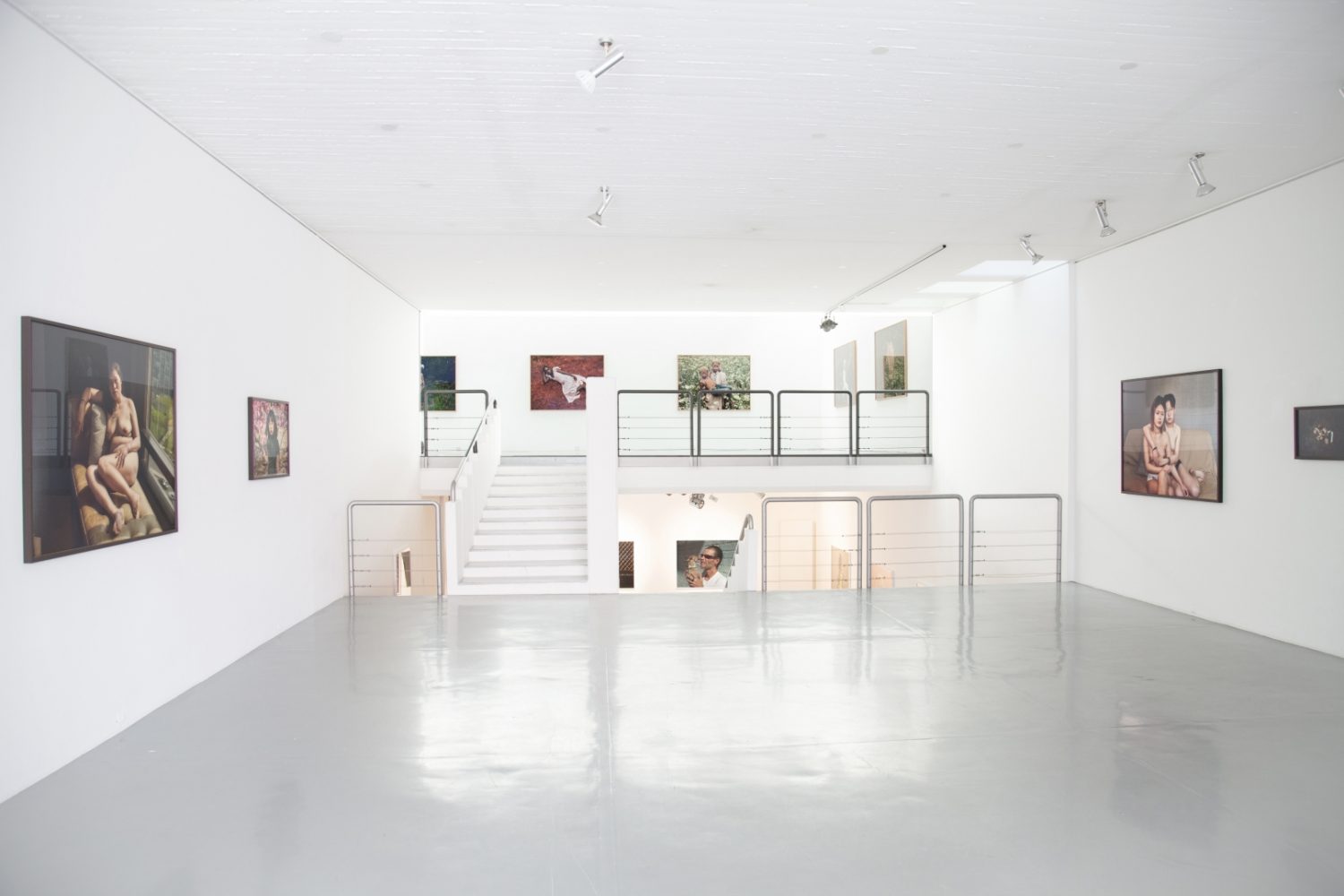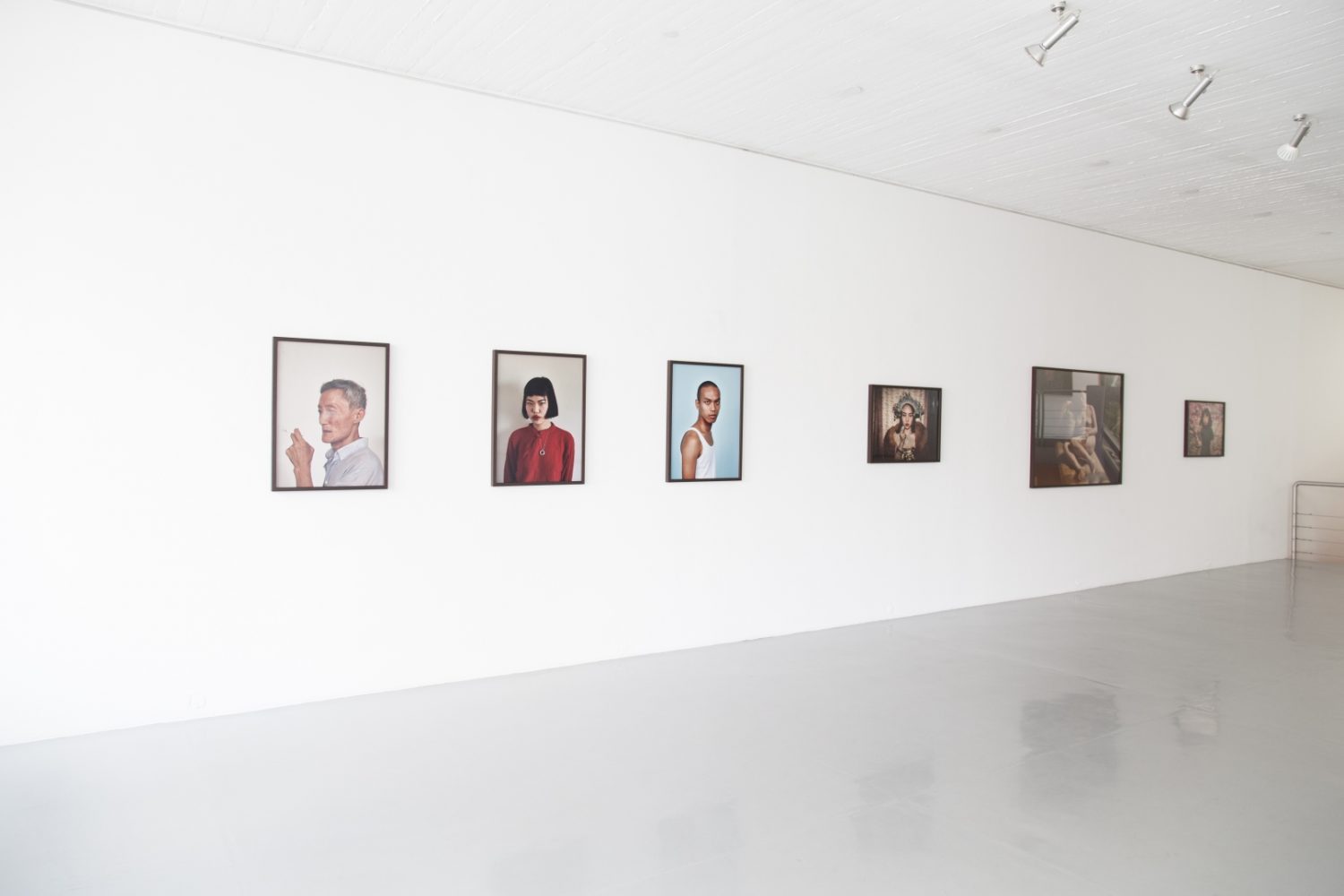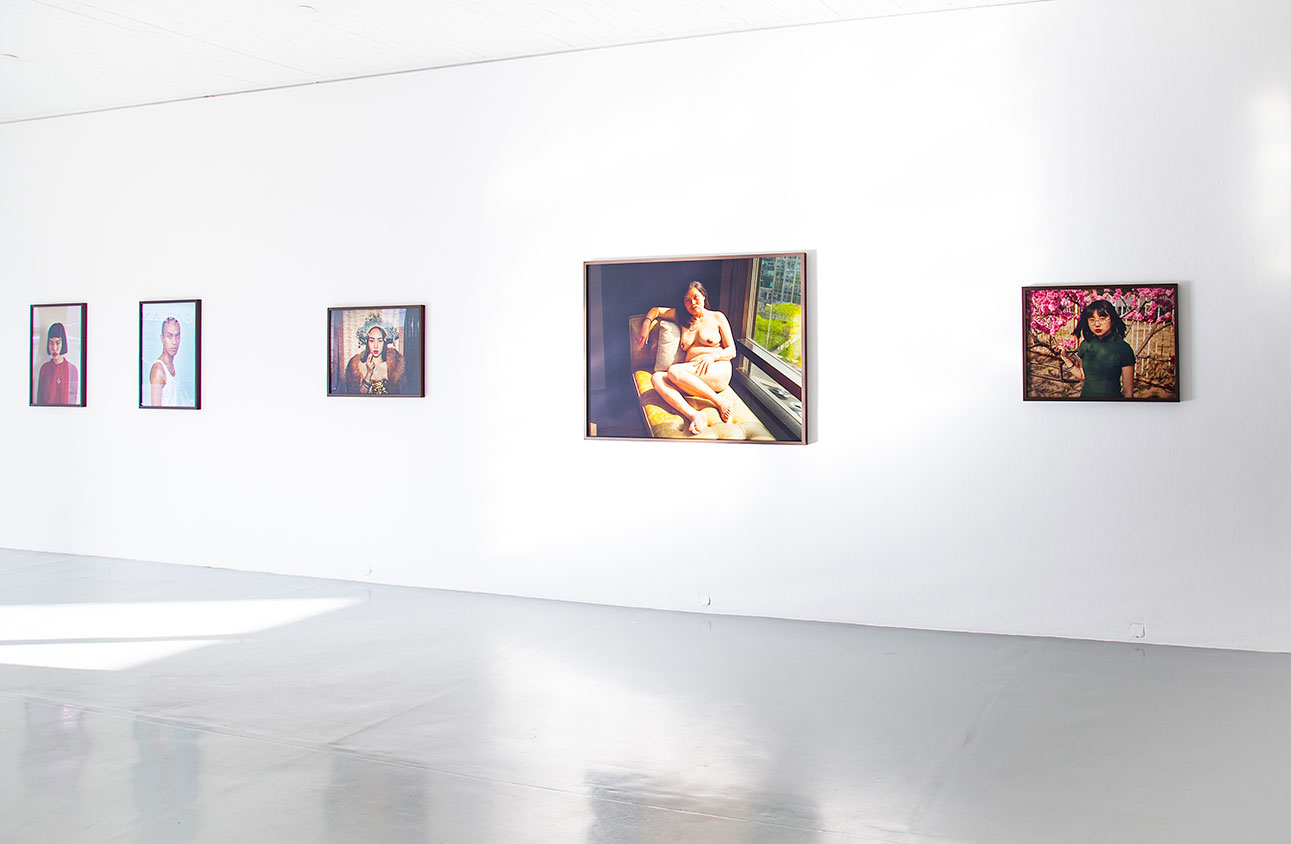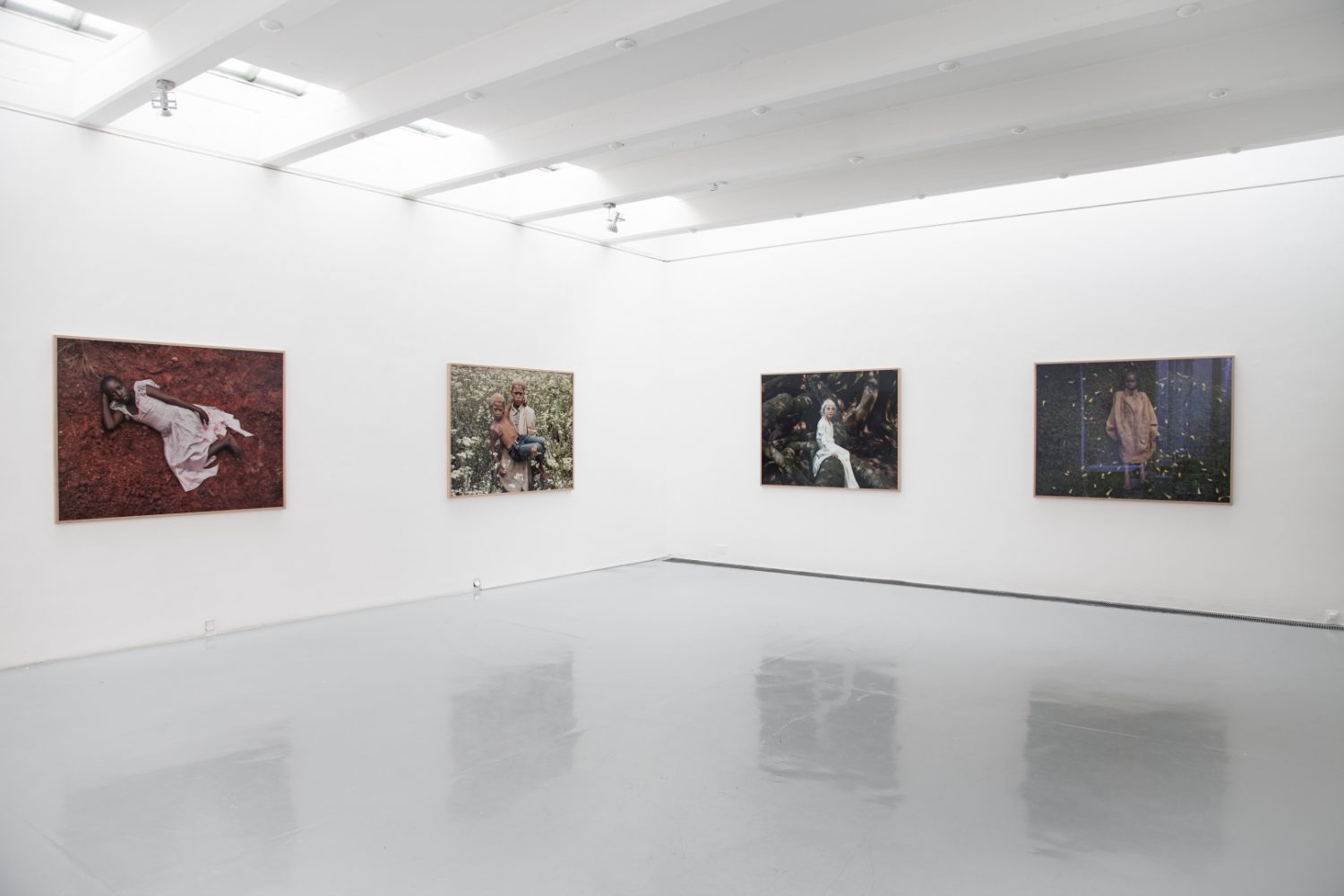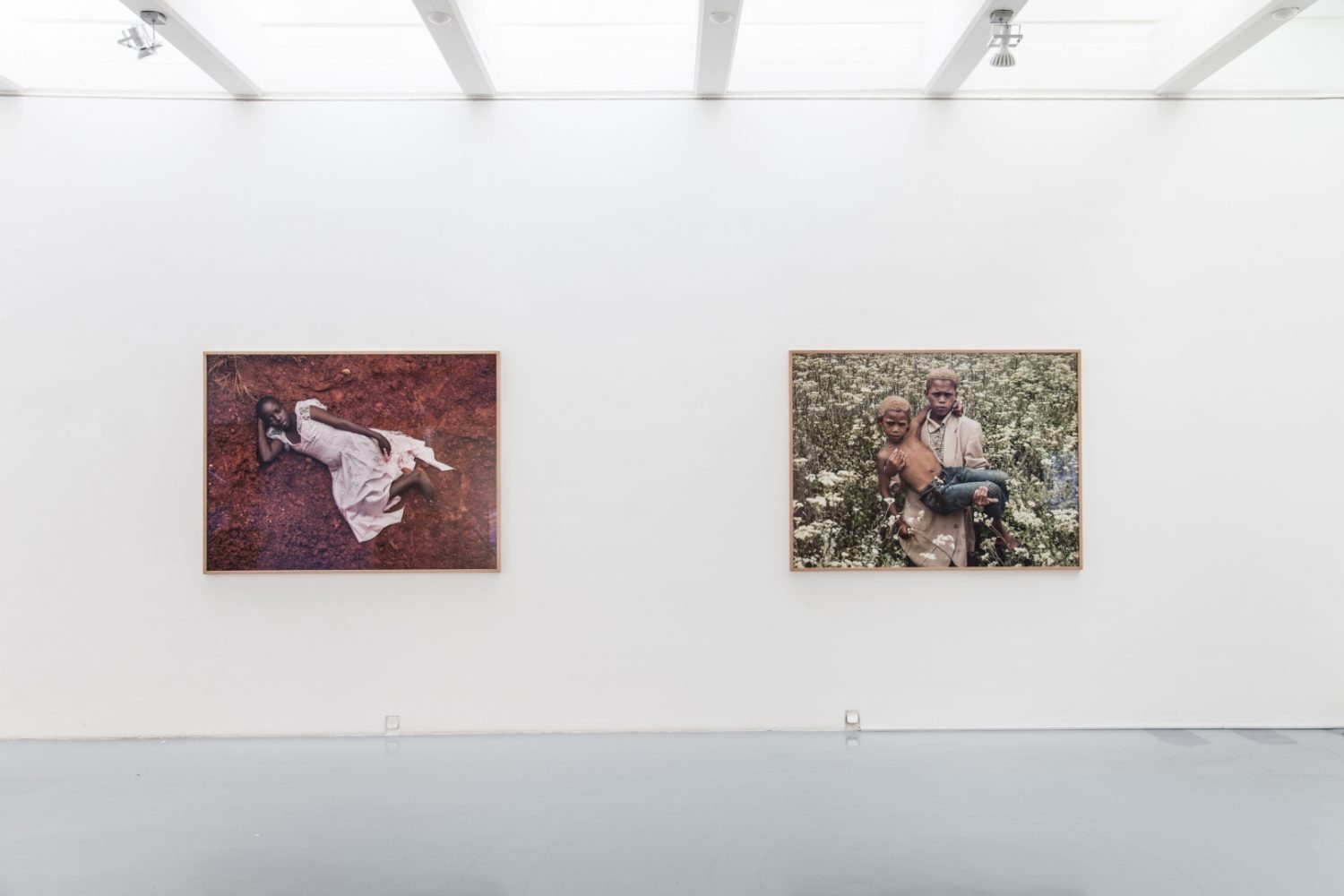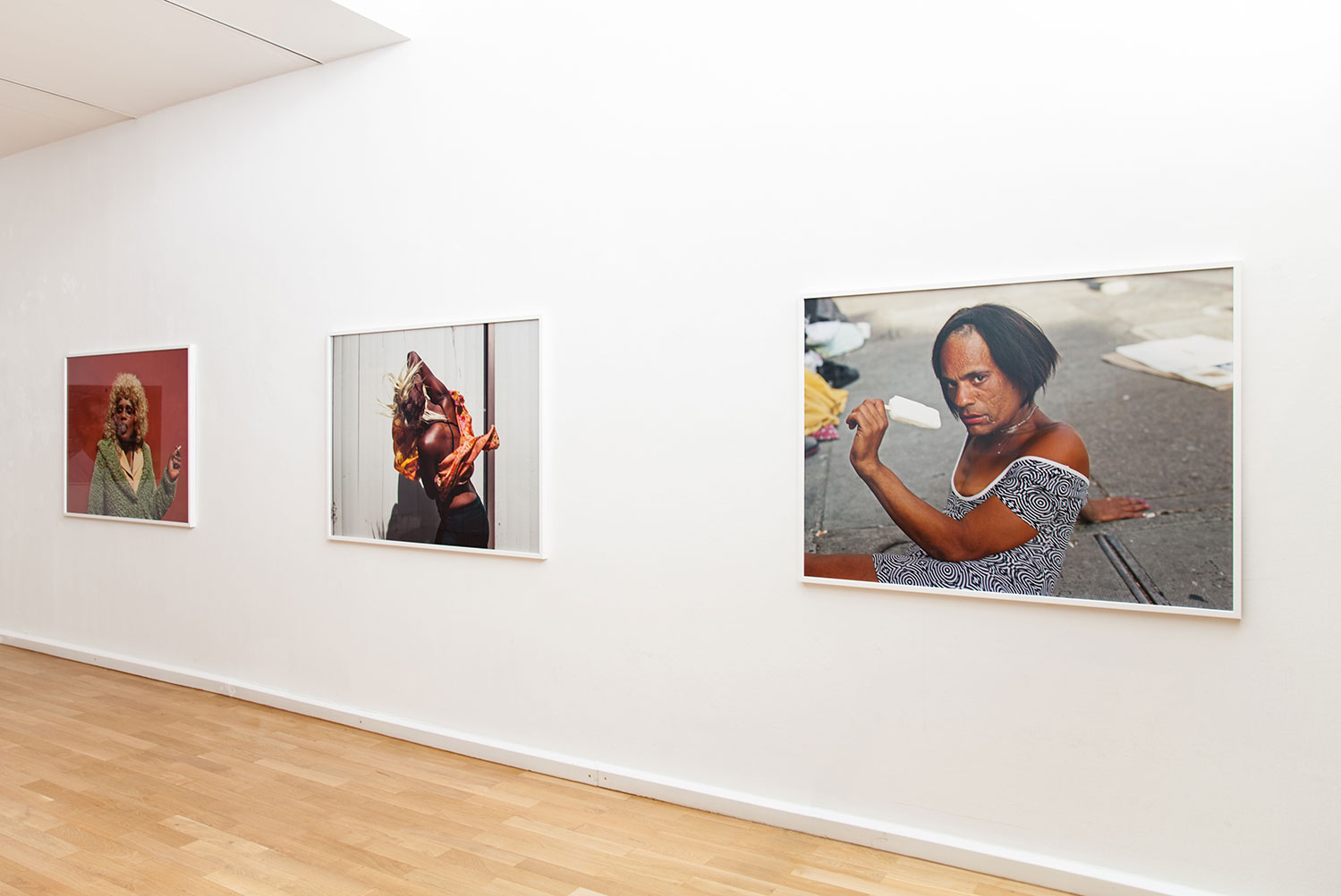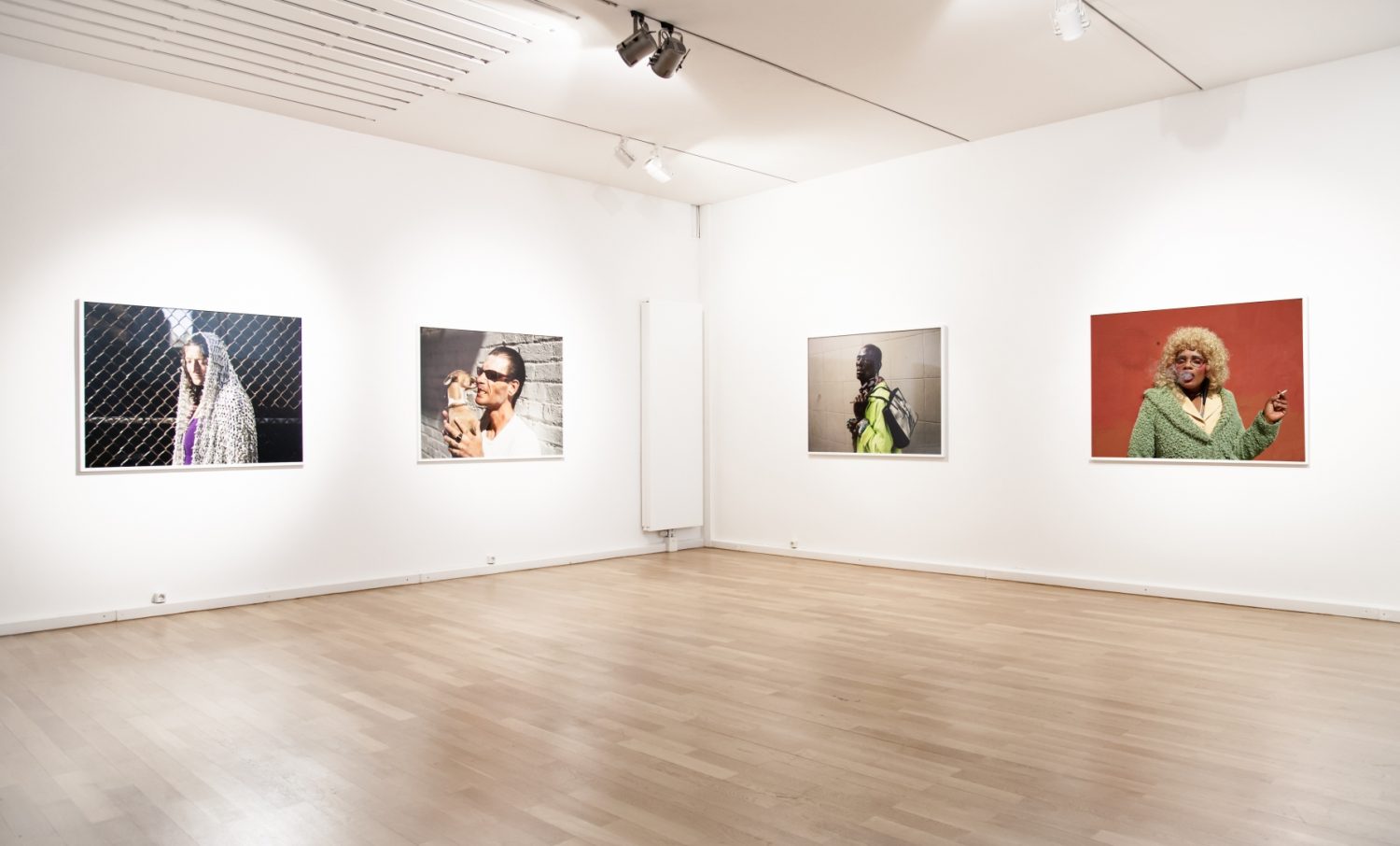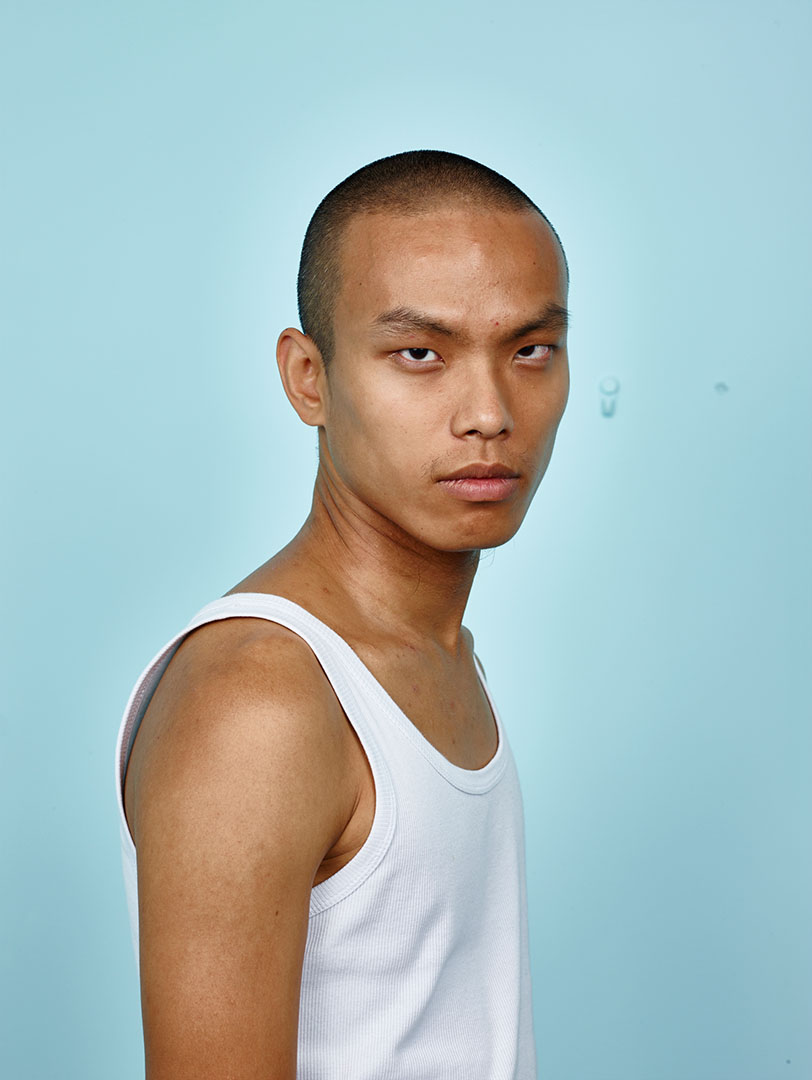PERIPHERAL DISPATCHES
Pieter Hugo
February 11th – April 15th, 2017
Pieter Hugo (*1976) ist einer der bedeutendsten Fotokünstler des 21. Jahrhunderts. Die Aufnahmen des Südafrikaners sind Herausforderungen an den Betrachter: komplex und widersprüchlich, überwältigend schön und verstörend zugleich. Intensive, singuläre Bilder, die sich aus der all-täglichen Bilderflut abheben und in unser Gedächtnis einbrennen.
Unter dem Titel „Peripheral Dispatches“ präsentiert Priska Pasquer die neuesten Porträtserien von Pieter Hugo. Die Werkgruppen „1994“, „Californi-an Wildflowers“ und „Flat Noodle Soup Talk“ entstanden in Südafrika, Ruanda, Kalifornien und Peking.
Pieter Hugos Fotografien sind „Peripheral Dispatches“ – periphere Botschaften, Notizen aus Randgebieten und Reibungszonen. Seine Werke entstehen in Gefilden abseits der Norm, in unsicheren Bereichen und an unbequemen Or-ten des Übergangs. Pieter Hugo sucht die Wirklichkeit jenseits der Klischees. Er fotografiert dort, wo sich gesellschaftliche Konventionen auflösen, wo Normen zerbröckeln und das Haltlose und Strukturlose sich ausbreiten. Er blickt hinter die Oberflächen und stellt niemanden bloß. Er weiß, dass Schönheit und Armut, Verletzlichkeit und Würde einander nicht ausschließen. Und dass es eine Welt ohne Widersprüche nicht gibt.
Pieter Hugos künstlerisches Potenzial speist sich aus seiner großen Neugierde und seiner enormen Wissbegierde. Er weiß, dass die sogenannte Wirklichkeit eine komplizierte Sache ist. Auf die Frage, was die Fotografie kann, was andere Medien nicht können, antwortet er: „Sie fragt, was real ist.“ (Mono-pol, Juli/August 2016) Hugos Bilder sind Zumutungen. Sie zeigen die Komplexität der Wirklichkeit, die Schönheit im Schrecklichen und sie zwingen den Betrachter, diese Widersprüche auszuhalten. Es ist ein südafrikanischer Blick auf die Welt.
„Peripheral Dispatches“ ist die dritte Ausstellung von Pieter Hugo bei Priska Pasquer. 2015 zeigte sie mit „Corporeality“ die erste Einzelausstellung des Fotografen in Deutschland. 2016 präsentierte sie die umfangreiche Werk- gruppe „Kin“.
1994
In Südafrika und Ruanda hat Hugo Kinder fotografiert, die nach 1994 geboren wurden. Die Porträts entstanden in der freien Natur. Unweigerlich evozieren sie das romantische Klischee der „idyllischen“ Kindheit in der „unberührten“ Natur. Doch die Landschaft rund um die Dörfer ist aufgeladen mit Bedeutung – getränkt vom Blut des Völkermords in Ruanda, durchzogen von willkürlichen Grundstücks-grenzen in Südafrika. Die Kinder haben die Gräuel des Genozids und die Brutalität des Apartheidregimes nicht mehr erlebt und wachsen in einer vergleichsweise friedlichen Umgebung auf. Und doch meint man in ihren ernsten Gesichtern ablesen zu können, dass die Vergangenheit ihre Schatten in die Zukunft wirft.
Californian Wildflowers
Der Tenderloin District in San Francisco ist ein sozialer Brennpunkt mit einer Vielzahl an Obdachlosen, Alkoholikern und Drogen- abhängigen. Ein Outsider-Bezirk mitten im Zentrum der Stadt, in dem sich die Freak-Szene (noch) gegen die digitale Ökonomie des nahe gelegenen Silicon Valley behauptet. Für Pieter Hugo „fühlt es sich an wie eine anarchische Gemeinschaft inmitten eines verrückten Booms“. (Pieter Hugo über Californian Wildflowers, 2016). Hier ist er offen auf Menschen zugegangen, die ihm ohne Angst begegnet sind. Sie haben sich ihm gezeigt in all ihrer Schönheit und Verletzlichkeit, in ihrer Lebendigkeit und Besonderheit.
Flat Noodle Soup Talk
„Here, in Africa and elsewhere, I want to photograph evidence of the fragility and vulnerability of the inhabitants.“ Pieter Hugo über „Flat Noodle Soup Talk“, 2016.
Die dritte in der Ausstellung gezeigte Werkgruppe, „Flat Noodle Soup Talk“, entstand 2015/16 in Peking. Der südafrikanische Künstler bezeichnet die chinesische Hauptstadt als den existenziells-ten Platz, den er je erlebt hat. Auch hier hat er Reibeflächen aufgespürt, an denen die Komplexität des modernen Lebens sichtbar wird. „Mei-ne Fotografien fokussieren die Kontraste oder das Nebeneinander, die das heutige China beleben.“ (Pieter Hugo über Flat Noodlesoup Talk, 2016). Fasziniert hat er den Lebensstil einer jungen Generation beobachtet, die den Widerspruch aushält, in einer staatlich überwachten post-revolutionären Konsumgesellschaft zuW leben. „Von der Oberfläche, den offiziösen Bildern, in die Tiefe, zur nicht nur schönen Seele der Gesellschaft – tatsächlich schildert Hugo seine Annäherung an Peking wie eine Bewegung von außen zum Kern“, schreibt Jens Hinrichsen in einem Text zu einem exklusiven Portfolio der Serie, das MONOPOL im Juli 2016 veröffentlichte.
Parallel zu dieser Ausstellung widmet das Kunstmuseum Wolfsburg, dem gerade einmal 40jährigen Künstler, Pieter Hugo die erste große Retrospektive in Deutschland. Sie umfasst seine 15 Werkgruppen, darunter die Serien „Looking Aside“, „Kin“, „The Hyena Men“, „Permanent Error“, „There’s a Place in Hell for Me and My Friends“ oder „Nollywood“, durch die Pieter Hugo bekannt geworden ist.
Die jüngst entstandenen Projekte „Flat Noodle Soup Talk“ und „Californian Wildflowers“ werden erstmalig weltweit gemeinsam sowohl im Kunstmuseum Wolfsburg als auch bei Priska Pasquer gezeigt.
Kunstmuseum Wolfsburg: Pieter Hugo. Between the Devil and the Deep Blue Sea, kuratiert von Dr. Uta Ruhkamp, 19.2.-23.7.2017
Aktuelle Publikationen
„Pieter Hugo. Between the Devil and the Deep Blue Sea“ Ausstellungskatalog Kunstmuseum Wolfsburg
Hrsg. Dr. Ralf Beil und Dr. Uta Ruhkamp
Mit einem Vorwort des Museumsdirektors Dr. Ralf Beil, einem Essay der Kuratorin Dr. Uta Ruhkamp sowie eigens erstellten Texten des Künstlers zu allen Fotoserien bis dato, deutsche und englische Ausgabe, 224 Seiten mit 180 Farbabbildungen, Prestel Verlag München, 2017 (erscheint am 27.2.2017)
„Pieter Hugo. 1994“
Mit einem Text von Ashraf Jamal (engl.)
Prestel Verlag München, 2017
„Pieter Hugo. Flat Noodle Soup Talk“
Editions Bessard Paris, 2016
Pieter Hugo (b. 1976) is one of the most important photographic artists of the 21st century. The images the South African artist produces are a challenge to their viewers: complex and contradictory, at the same time unsettling and staggeringly beautiful. They are intense, singular pictures that stand out from the everyday deluge of images and burn themselves into our memories.
Under the title “Peripheral Dispatches,” Priska Pasquer presents Pieter Hugo’s most recent portrait series. The groups of works “1994”, “Californian Wildflowers” and “Flat Noodle Soup Talk” were produced in South Africa, Rwanda, California and Beijing.
Pieter Hugo’s photographs are “Peripheral Dispatches” – peripheral communications, notes from the fringes and the friction zones. His works emerge in realms outside the norm, in unsecured regions and uncomfortable places of transition. Pieter Hugo seeks out the reality beyond clichés. He takes photo-graphs in those places where societal conventions are dissolved, where norms crumble away, and where groundless and structureless things proliferate. He looks beneath surfaces and does not expose or embarrass anyone. He knows that beauty and poverty, vulnerability and dignity are not mutually exclusive – and that there is no such thing as a world without contradictions.
Pieter Hugo’s artistic potential is fed by his great curiosity and his enormous thirst for knowledge. He knows that so-called “reality” is a complicated thing. In response to the question of what photography can do that other media cannot, he answers: “It questions what is real” (Monopol, July/August 2016).
Hugo’s images are impositions on the viewer. They reveal the complexity of reality, the beauty in the horrific, and they force the observer to tolerate these contradictions. It is a South African view of the world.
“Peripheral Dispatches” is Priska Pasquer’s third exhibition of Pieter Hugo’s work. In 2015, with “Corporeality,” she presented the photographer’s first solo exhibition in Germany. In 2016, she exhibited his extensive group of works “Kin.”
1994
In South Africa and Rwanda, Hugo photographed children who were born after 1994. These portraits were taken outdoors in nature. Inevitably, they evoke the romantic cliché of an “idyllic” childhood in “unspoiled” nature. Yet the landscape surrounding the villages is loaded with significance – soaked in the blood of the Rwandan genocide, permeated with arbitrary property lines in South Africa. The children are too young to have experienced the horrors of the genocide or the brutality of the Apartheid regime; they are growing up in a comparatively peaceful environment. Nevertheless, it seems that in their earnest faces, we can read that the past has cast its shadow over the future.
Californian Wildflowers
San Francisco’s Tenderloin District is a socially troubled area with a high rate of homelessness, alcoholism and drug addiction. It is an “outsider” district located directly in the center of a city in which the “freak” scene (still) asserts itself in contrast to the digital economy of the nearby Silicon Valley. For Pieter Hugo, “it feels like an anarchic community in the midst of a crazy boom” (Pieter Hugo on “Californian Wildflowers,” 2016). Here, he openly approached people who met him without fear. They revealed themselves to him in all of their beauty and vulnerability, in their vibrancy and distinctiveness.
Flat Noodle Soup Talk
„Here, in Africa and elsewhere, I want to photograph evidence of the fragility and vulnerability of the inhabitants.“
Pieter Hugo on „Flat Noodle Soup Talk“, 2016
The third group of works included in the exhibition, “Flat Noodle Soup Talk,” was produced in Beijing in 2015-16. The South African artist describes the Chinese capital as the most existential place he has ever experienced. Here, too, he sought out areas of friction in which the complexity of modern life becomes visible. “My photographs focused on the contrasts or juxtapositions that animate present-day China” (Pieter Hugo on “Flat Noodle Soup Talk,” 2016). With fascination, he observed the lifestyle of a young generation which endures the contradictions of living in a government-monitored, post-revolutionary consumer society. In his ac-companying text to an exclusive portfolio of the series which was published by Monopol in July 2016, Jens Hinrichsen wrote: “From the surface ‒ the officious images ‒ to the deep, not always beautiful soul of the society – Hugo effectively portrays his exploration of Beijing as a movement from the out-side into the core.”
In parallel to this exhibition, the Kunstmuseum Wolfsburg is presenting the first major German retrospective devoted to the work of Pieter Hugo – an artist who has only just celebrated his 40th birthday. The exhibition encompasses his 15 groups of works, including the series “Looking Aside,” “Kin,” “The Hyena Men,” “Permanent Error,” “There’s a Place in Hell for Me and My Friends” and “Nollywood,” for which Pieter Hugo became famous.
The most recently produced projects, “Flat Noodle Soup Talk” and “Californian Wildflowers” are being presented together for the first time worldwide – both at the Kunstmuseum Wolfsburg and at Priska Pasquer.
Kunstmuseum Wolfsburg: Pieter Hugo. Between the Devil and the Deep Blue Sea, curated by Dr. Uta Ruhkamp, February 19 – July 23, 2017
Current publications
“Pieter Hugo. Between the Devil and the Deep Blue Sea“
Exhibition catalog: Kunstmuseum Wolfsburg, Dr. Ralf Beil and Dr. Uta Ruhkamp, pubs.
With a foreword by museum director Dr. Ralf Beil, an essay by curator Dr. Uta Ruhkamp as well as texts composed by the artist himself for all the photographic series to date; German and English edition; 224 pages with 180 color illustrations; Prestel Verlag Munich, 2017 (publication date: February 27, 2017)
“Pieter Hugo. 1994“
With a text by Ashraf Jamal (English)
Prestel Verlag Munich, 2017
“Pieter Hugo. Flat Noodle Soup Talk“
Editions Bessard Paris, 2016

